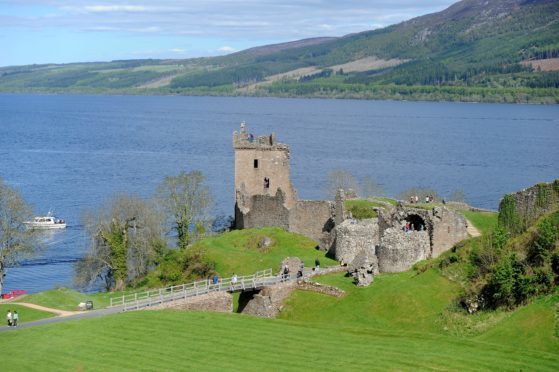The Highlands and Islands have been identified as the joint top staycation hotspot in the country.
More and more people are choosing to visit rural and rugged corners of Scotland for their holidays, with the north and Edinburgh tying at the top of the charts.
In total, there have been 5.5 million overnight trips across Scotland from British visitors – including Scots – from January to August this year, with the domestic stays estimated to have delivered a £1.5 million boom to the Scottish economy.
The Highlands and Islands is a firm favourite with visitors, with 2.1 million trips taken to the region for the first eight months of the year, tied only with Edinburgh and Lothians as the most popular destination across the country.
The information comes from the Great Britain Tourism Survey.
Chris Greenwood of VisitScotland said: “Scotland is seeing a resurgence in the staycationer.
“The UK remains Scotland’s largest tourism market and it is hugely encouraging to see so many more Scots exploring what is right here on their doorstep.
“Uncertainty around Brexit and fluctuations in currency have undoubtedly been contributing factors for holidaymakers decided to travel closer to home but it is also an opportunity for tourism businesses to engage with this captive audience to encourage return trips.
“The impact of tourism goes far beyond the holiday experience. It is vital to the Scottish economy, reaching every corner of the country, creating jobs and bringing economic and social change.”
The main source of domestic tourism comes from those aged over 55, with millennials and those falling into the generation z category amounting for almost a fifth of all domestic travellers.
Overnight visits to coastal resorts and towns attracted some two million visitors, with 4.5million visiting cities and major towns. A further 860,000 visited rural areas with the number of Scots undertaking these trips accounting for 54.4% of all British visitors.
Local elected members reacted positively to the boom, however, some did note improvements to infrastructure must be undertaken to ensure the sustainability of future tourism.
Highlands and Islands MSP Rhoda Grant said: “It’s great that visitors from across the UK are coming to our beautiful region in increased numbers and can share the quality of life that we all know so well.
“However, we must ensure that we have the facilities that people need, from ferries which can cope with increased numbers in peak season, to adequate roads and enough accommodation – and that is going to be the challenge as this industry develops in order to ensure tourists come back.”
Perthshire is recognised as the third most successful destination with 507,000 visiting this year, with figures for Fife and Central Scotland, including Argyll and the Isles, experiencing a 39% increase on 2018 figures.
The Highland attractions visitors are flocking to
Both domestic and overseas visitors are travelling in their thousands to visit various attractions across the Highlands with some well-known attractions weighing in in the top 10.
Urquhart Castle, located on the banks of Loch Ness, home to the famed Loch Ness Monster, is the most visited attraction in the region with more than 518,000 visiting according to the latest figures produced by the Moffat Centre, the centre for travel and tourism business development.
The medieval fortress, which has stood through more than 1,000 years of history on the Great Glen, is also the fifth most visited attraction across the nation.
Visits to the Glenfinnan Monument in Lochaber dropped by nearly 3% from 2017 to the 2018 figures – however, the railway viaduct made popular by the Harry Potter franchise remains the second most visited location in the Highlands.
Glenmore Forest Park is the third most visited location closely followed by Loch Ness by Jacobite cruises along the famed stretch of water, Glencoe Visitor Centre and the Highland Wildlife Park.
Culloden Visitor Centre, steeped in history and located by the famous battlefield, took in just over 200,000 visitors, ahead of the Caledonian Canal Visitor Centre and Nevis Range ski centre on Ben Nevis, which took in the eighth and ninth most visited spots.
Dunvegan Castle and Gardens on Skye had more than 162,000 visitors in 2018 owing to the extensive number of visitors the island has experienced in recent times as the Misty Isle is recognised as a top destination for tourists to visit from all over the world.










